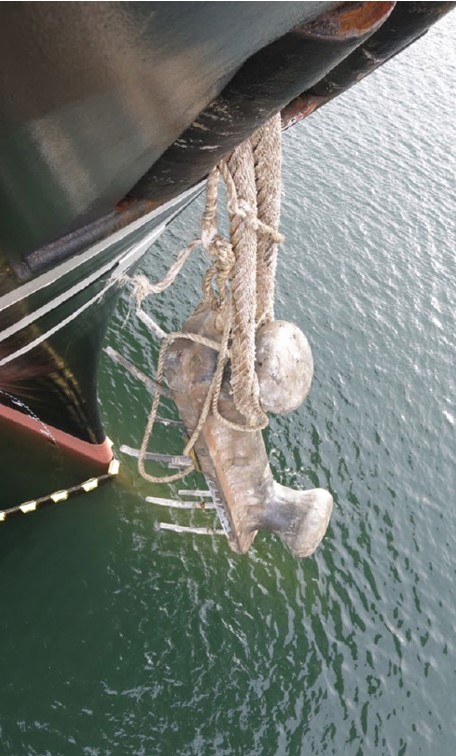American P&I Club: Extreme bollard pull
The American P&I Club, as part of it’s “Good Catch” safety series, has published learnings from an incident where bollards were pulled right out of the ground of the dock by the vessel.
What happened
A large container vessel had just begun cargo operations. Approximately two hours later, the bollard holding the bow lines was pulled out of the dock. At the time of the bollard failure, the wind was mild, and the current was minimal. The bow of the vessel swung outboard slightly, and the stern swung into the dock. The stern of the vessel contacted the fendering system but neither the vessel nor the fenders were damaged. There were no injuries nor damage to the vessel. The repair to the bollard exceeded $37,000.

What went right?
The forward spring lines held and stopped the swing of the vessel after the bollard failure. The crew was subsequently able to resecure the bow lines to different bollards.
What went wrong?
Upon investigation, the four bow lines from the vessel had all been attached to the same bollard, the one that failed. The two forward spring lines were both attached to a different bollard. The two aft spring lines were both attached to yet another bollard. The four stern lines were paired to two different bollards astern of the vessel.
The normal practice of the crew was to place no more than two mooring lines on each bollard, but the pilot and line handlers had attached all four to the same bollard because a container crane was partially blocking access to the next bollard forward that would have otherwise been used.
Some of the bolts attaching the bollard to the dock had sheared and some of the bolts were pulled out of the mounting intact. Each of the four bow lines was on a self-tensioning mooring winch. The combined load of the four winches together exceeded the bollard’s rated load.
Actions
- Do not overload bollards with multiple mooring lines. If the load capacities of the bollards are not known, find out, and then adjust the mooring plan accordingly so the bollards will not be overloaded;
- Management of Change:
- When deviating from a normal mooring practice such as only putting two mooring lines on a bollard, the specific risk of overloading a bollard should be evaluated based on the capacity of the bollard, the number of mooring lines that will be placed on that bollard, and the settings on the self-tensioning winches;
- If cranes or other dockside equipment block access to bollards that would normally be used, or if bollards that would normally be used are already being used by other vessels, the options should be discussed, and the risks should be identified and assessed before proceeding.
Members may wish to refer to:
Safety Event
Published: 4 July 2022
Download: IMCA SF 16/22
IMCA Safety Flashes
Submit a Report
IMCA Safety Flashes summarise key safety matters and incidents, allowing lessons to be more easily learnt for the benefit of all. The effectiveness of the IMCA Safety Flash system depends on Members sharing information and so avoiding repeat incidents. Please consider adding [email protected] to your internal distribution list for safety alerts or manually submitting information on incidents you consider may be relevant. All information is anonymised or sanitised, as appropriate.
IMCA’s store terms and conditions (https://www.imca-int.com/legal-notices/terms/) apply to all downloads from IMCA’s website, including this document.
IMCA makes every effort to ensure the accuracy and reliability of the data contained in the documents it publishes, but IMCA shall not be liable for any guidance and/or recommendation and/or statement herein contained. The information contained in this document does not fulfil or replace any individual’s or Member's legal, regulatory or other duties or obligations in respect of their operations. Individuals and Members remain solely responsible for the safe, lawful and proper conduct of their operations.
